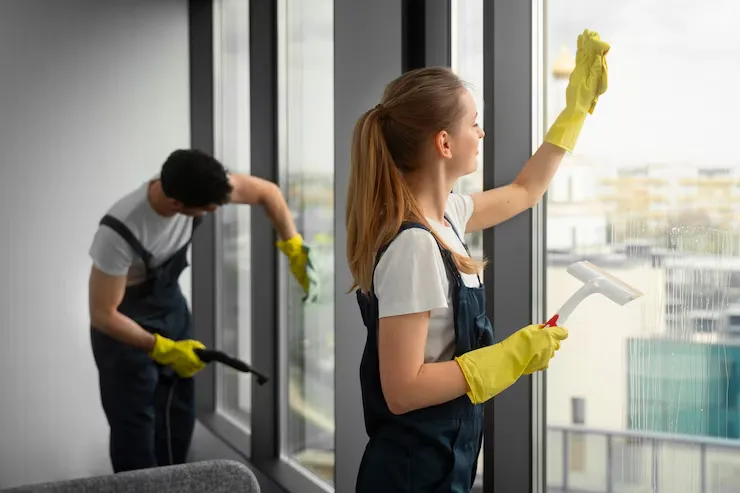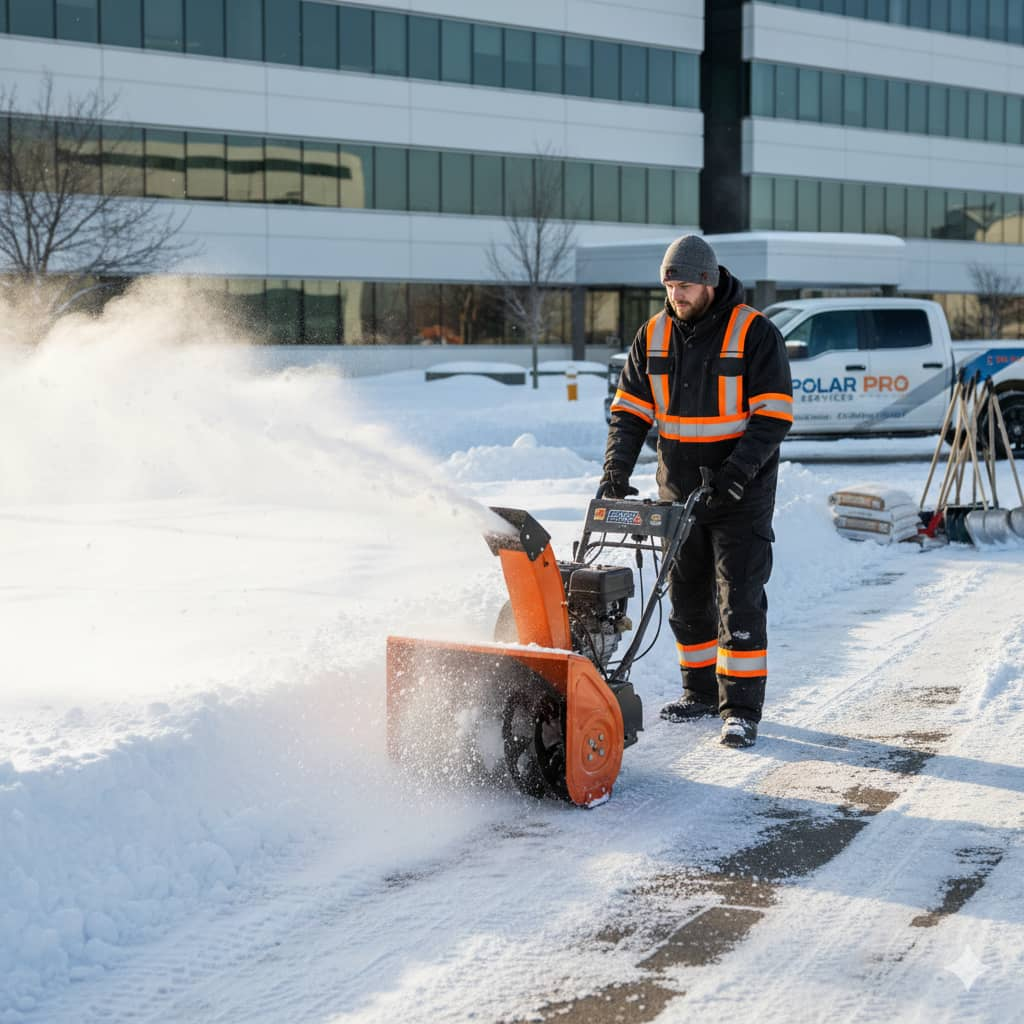Summer in Canada brings the perfect opportunity to tackle home maintenance tasks like window cleaning. But before you grab your squeegee and solution, let’s talk about timing.
The outdoor temperature really makes a big difference in your results, and cleaning at the wrong time can turn what should be a satisfying task into a disaster. Let’s explore when you should—and definitely shouldn’t—clean your windows during Canadian summers.
The Science Behind Temperature And Window Cleaning
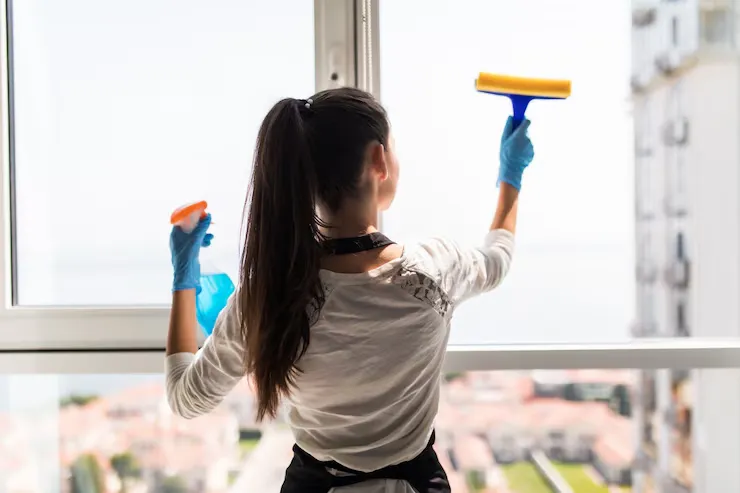
Once temperatures climb above 25 °C, cleaning solutions evaporate too quickly. This rapid evaporation leaves those annoying streaks and spots that make your windows look worse than before you started.
Glass also behaves differently in intense heat. Your window panes expand slightly in hot weather, which means cleaning solutions can seep into the edges and frames, potentially causing damage over time. This expansion also affects how cleaning products interact with the glass surface, making it much harder to achieve that crystal-clear finish you’re hoping for.
Morning Magic: The Ideal Time to Clean Windows

The early morning hours, between 6:00 AM and 10:00 AM during Canadian summers, give you the perfect window for cleaning. The temperature typically stays comfortably below 20 °C, giving you plenty of time for proper cleaning before the day heats up.
Morning cleaning helps reveal imperfections without creating that intense glare you get from midday sun. This visibility advantage means you’ll find problems while you can still fix them.
There’s also something peaceful about tackling this chore in the quiet morning hours. Many people find this creates a more pleasant cleaning experience overall, turning what could be a tedious task into a satisfying start to the day.
When to Avoid Window Cleaning?
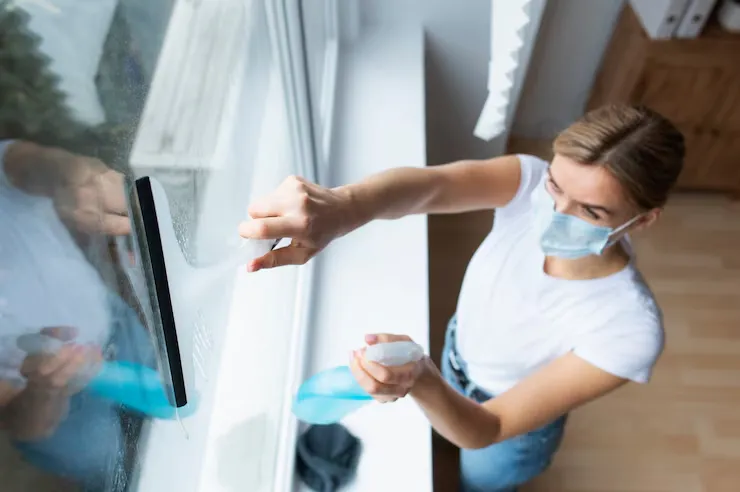
When temperatures rise above 30 °C, which happens regularly during July and August in many Canadian regions, window cleaning becomes almost impossible to do well. At these temperatures, your cleaning solutions can dry in seconds rather than minutes, leaving residue that’s difficult to remove.
Intense heat can also make the physical work uncomfortable and potentially unsafe. Plus, the combination of direct sunlight and high temperatures creates the worst working conditions.
You should also consider the health aspects during extreme heat. The physical exertion of window cleaning combined with high temperatures increases your risk of heat-related illnesses. Dehydration, heat exhaustion, and even heat stroke become real concerns, particularly for older adults or those with certain health conditions.
Evening Alternatives: The Second-best Option
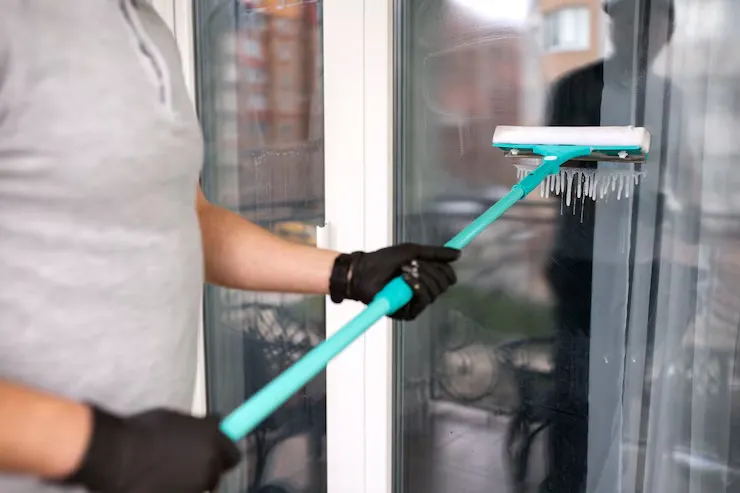
If morning cleaning doesn’t fit your schedule, the early evening hours after the sun has begun to set offer a solid alternative for cleaning your windows.
Once temperatures drop below 25 °C and direct sunlight no longer hits your windows, conditions improve significantly for cleaning. The gradual cooling that occurs as evening approaches creates a more forgiving environment for your cleaning solutions to work effectively.
Evening cleaning brings its own unique advantages. The day’s dust has typically settled by then, meaning fewer particles will be floating around to land on your freshly cleaned glass.
The main drawback to evening cleaning is the light, which can make it harder to spot streaks or missed areas. Using good artificial lighting helps overcome this challenge, but you might still discover imperfections the next morning when sunlight hits the glass. Despite this limitation, evening cleaning is much better than attempting the task during the heat of the day, and many Canadian homeowners find it fits better with their work schedules.
Professional Tips For Cleaning in Hot Weather

Sometimes life forces you to clean windows during high temperatures. In these situations, we can share several techniques to minimize the negative effects of heat on your results.
Working in sections is key when cleaning in warmer temperatures. Instead of spraying an entire window and then wiping, try spraying and immediately cleaning small areas. This prevents the solution from drying before you can properly remove it.
Specialized hot-weather cleaning solutions can also make a difference. Products formulated with slower-evaporating ingredients help combat the rapid drying that causes streaking.
If you must clean your windows in less-than-ideal conditions, these tips can help you achieve acceptable results despite the challenging circumstances.


